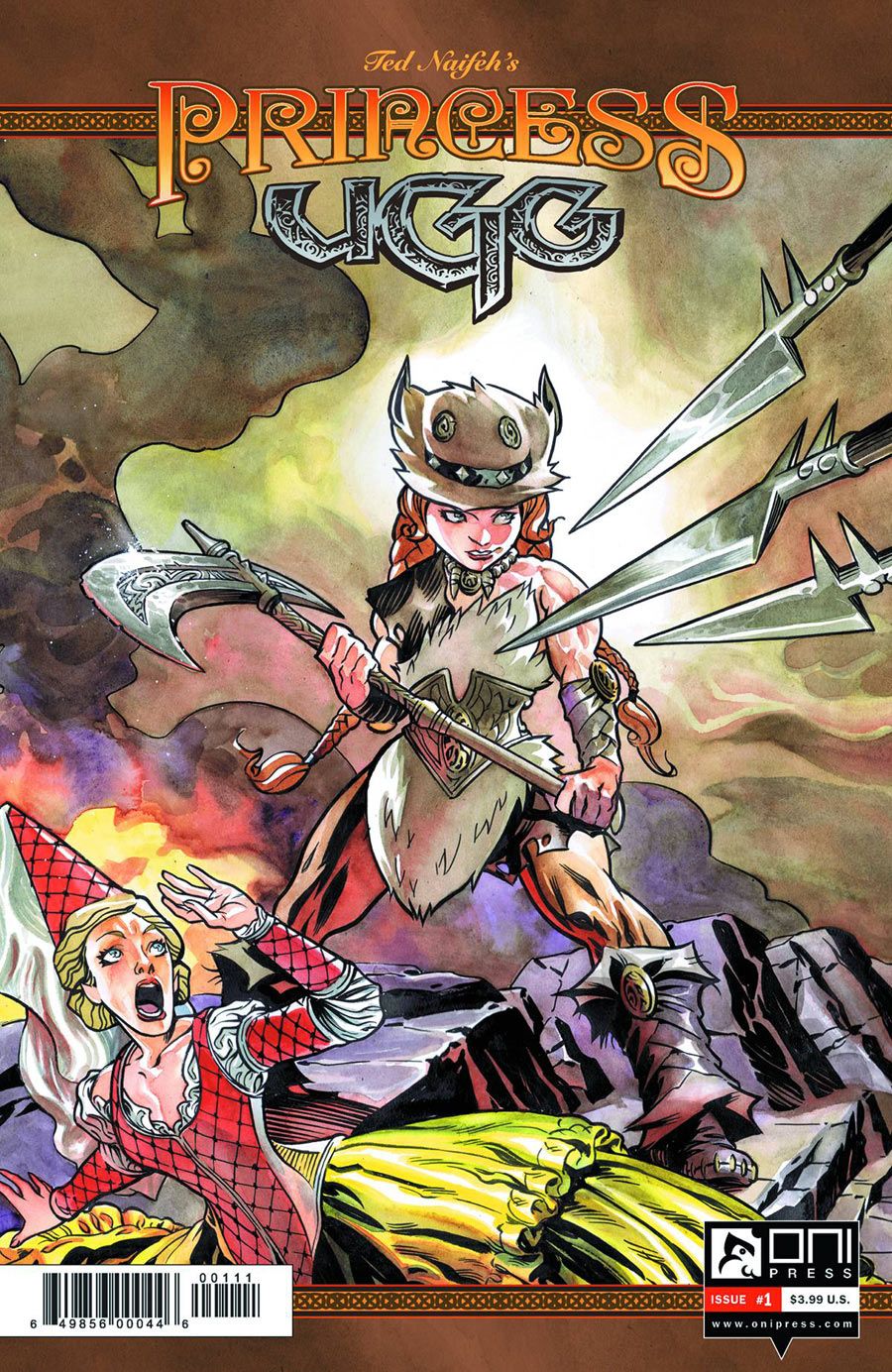Ted Naifeh's "Princess Ugg" is a charming idea with a ton of potential, but unfortunately, it suffers from an inconsistent execution that makes it difficult to fully enjoy. There's a fun story with some lovely heart, but the rough edges create some big stumbling blocks to fully appreciating what Naifeh is trying to do.
The story -- one of Princess Ãœlga of Grimmeria, a "berzerker" from a "less civilized" land than most other princesses, as she leaves her home to attend "princess school" -- has a ton of character potential. It's clear from the beginning that Ãœlga is set up to be a stranger in a strange land, that lessons will be learned and everyone will be better for it. There's a lot of heart and energy to the book, but as they say, the devil is in the details, and the details here are inconsistent and lack clarity.
We meet Ãœlga and her magnificently powerful mother prior to a battle, and that's the last we see of the queen. The text implies she's dead, and after a third read I relaized that Ãœlga's conversation with her father the king takes place at her mother's gravesite, but it should not take multiple reads for that to become clear. Princess Ãœlga is headed off to "princess school" because, we're told, she promised her mother she would go, but really, when Princess Ãœlga and her mother spoke about "schoolin'," it's said outright it's about a battle; so again, lack of clarity reigns.
Unfortunately the visuals, though quite pretty, don't help matters when it comes to following the plot. Naifeh's style, with colors by Warren Wucinich is incredibly fun on the whole, and there are a lot of great design choices, but the storytelling is often muddy, going for a pretty splash panel instead of something that better tells the story. Similarly, it's hard to get a bead on how old (and how large?) Princess Ãœlga is supposed to be. She presents in much of the text, in her diminutive stature, and in the face, as quite young -- perhaps a pre-teen or teen at most, but her physical development has her looking all woman, and extremely muscle-bound. The muscles are great -- a wonderful design (and character) choice, and it's a nice call back to the looks of her mother, but it is confusing from an age standpoint. Princess Ãœlga's mother was huge -- a massive "Red Sonja-like" battle warrior, and next to her Princess Ãœlga looks about twelve. But in other scenes, the princess' height seems to fluctuate; she's as tall or taller than some guards, but then barely more than half the height of Princess Atraesca. The end result is, I have no idea how tall she really is, or how old she's supposed to be. Is she an extremely well-developed thirteen year-old? Is she a very short seventeen year-old? Maybe none of it matters, but these are the kind of little details that get in the way of fully immersing yourself in the story.
The only other primary character, Princess Atraesca (or Lady Julifer, both are mouthfuls), is presented as the broadest of possible princess stereotypes. She's awful from tip to tail, a character nobody could possibly like or relate to, and though she's presented primarily as a contrast to show how these two very different princesses have been raised, it's pretty unbalanced and lazy. We obviously side with Ãœlga as our heroine already, so why a horrible entitled princess has to be thrown in for contrast is unclear. That said, the story does set these two ladies up as roommates going forward, and there's some Felix and Oscar-style odd couple potential. That said, the way Atraesca is presented makes it hard to imagine her agreeing to share a room to begin with, let alone the small room she's given, and one with an unknown roommate. Again, the little details fail.
All these inconsistencies aside, I still really liked Ãœlga as a character and want to see her journey unfold. Though the visuals let me down from a storytelling perspective, I like the design and energy of the book and I can't help but see its vast potential. Though this first issue is a bit of a miss, I'll definitely be back to see if Naifeh can smooth out the rough edges and create something really exciting out of the framework he's established.

